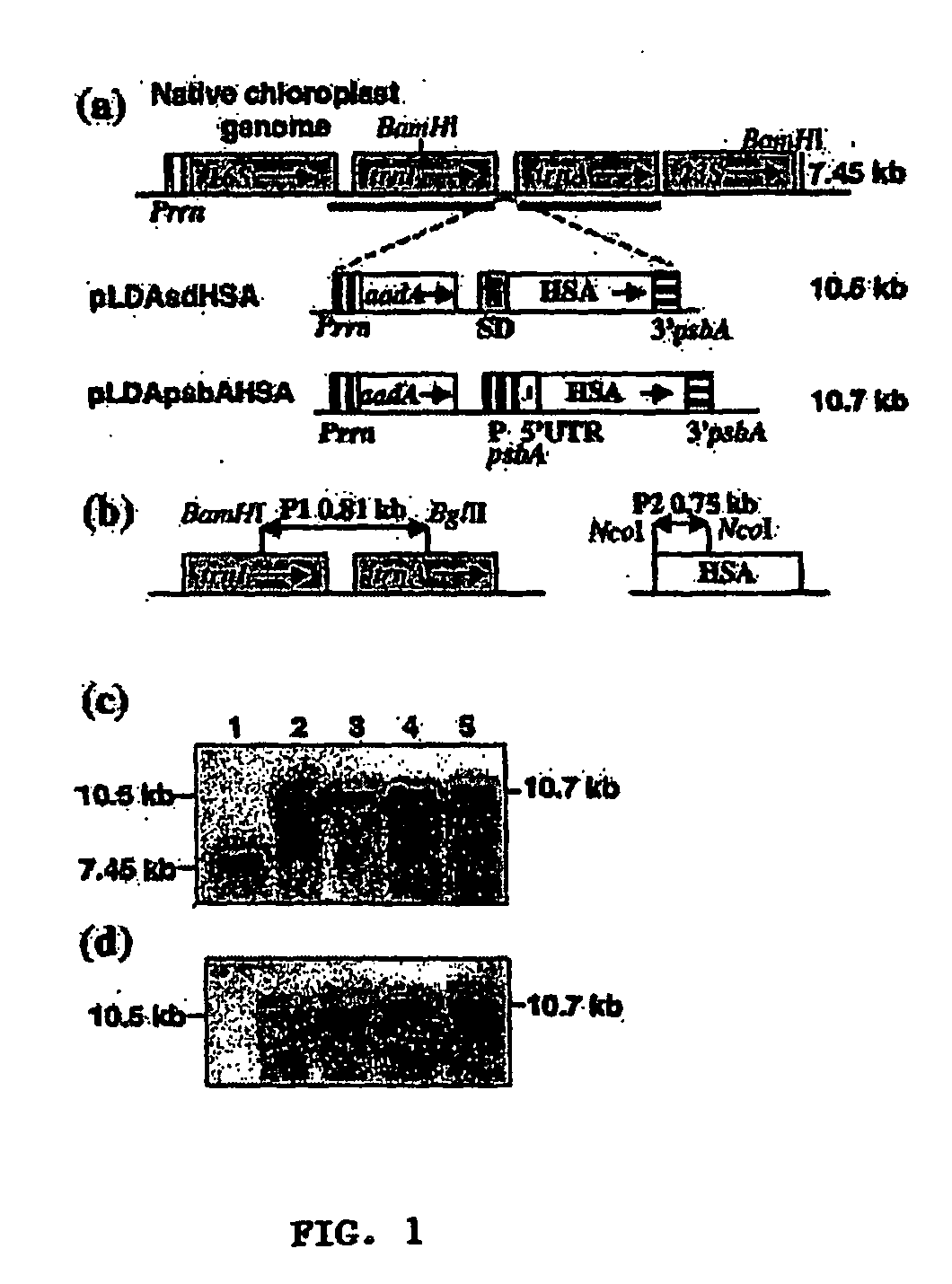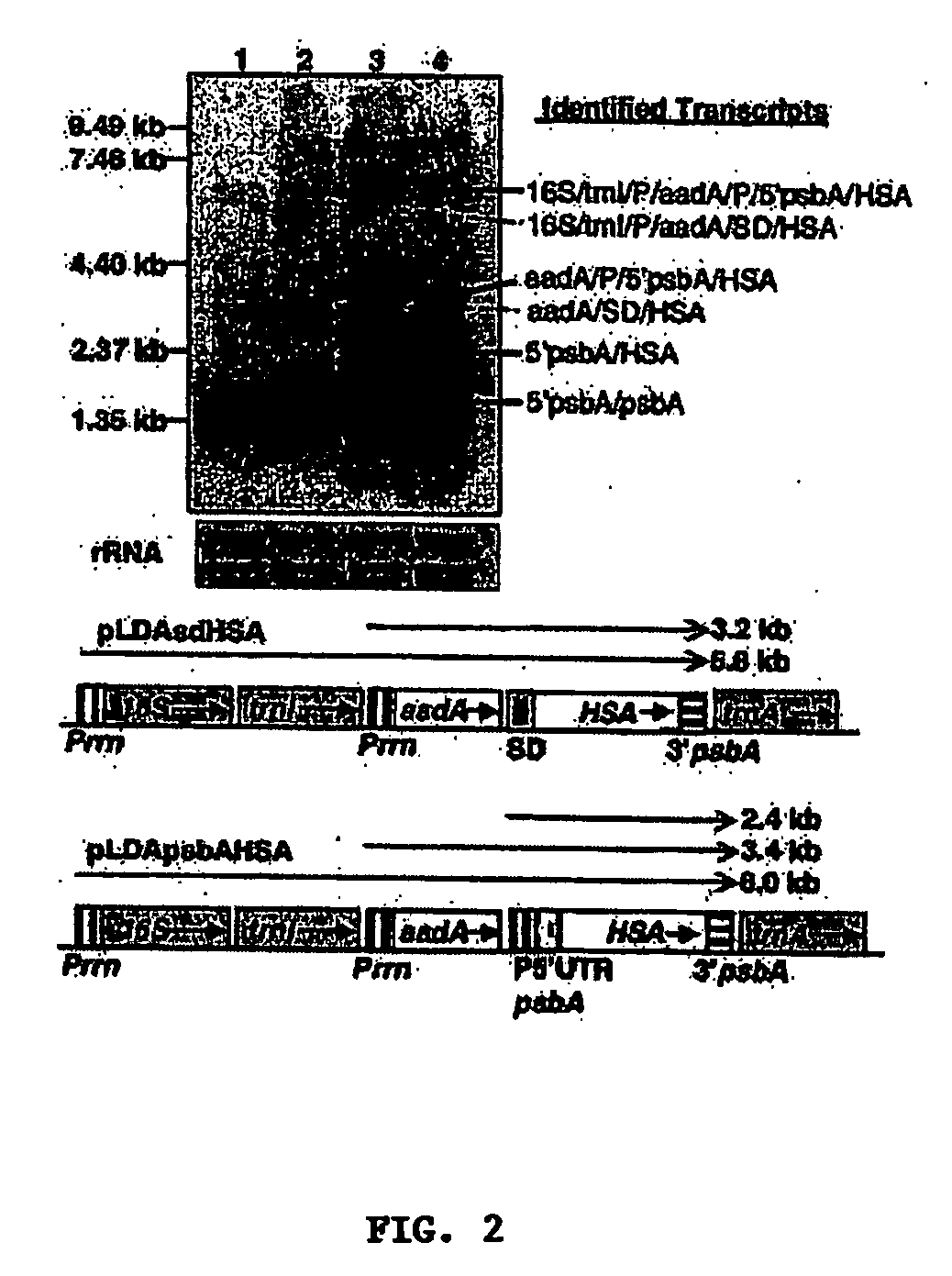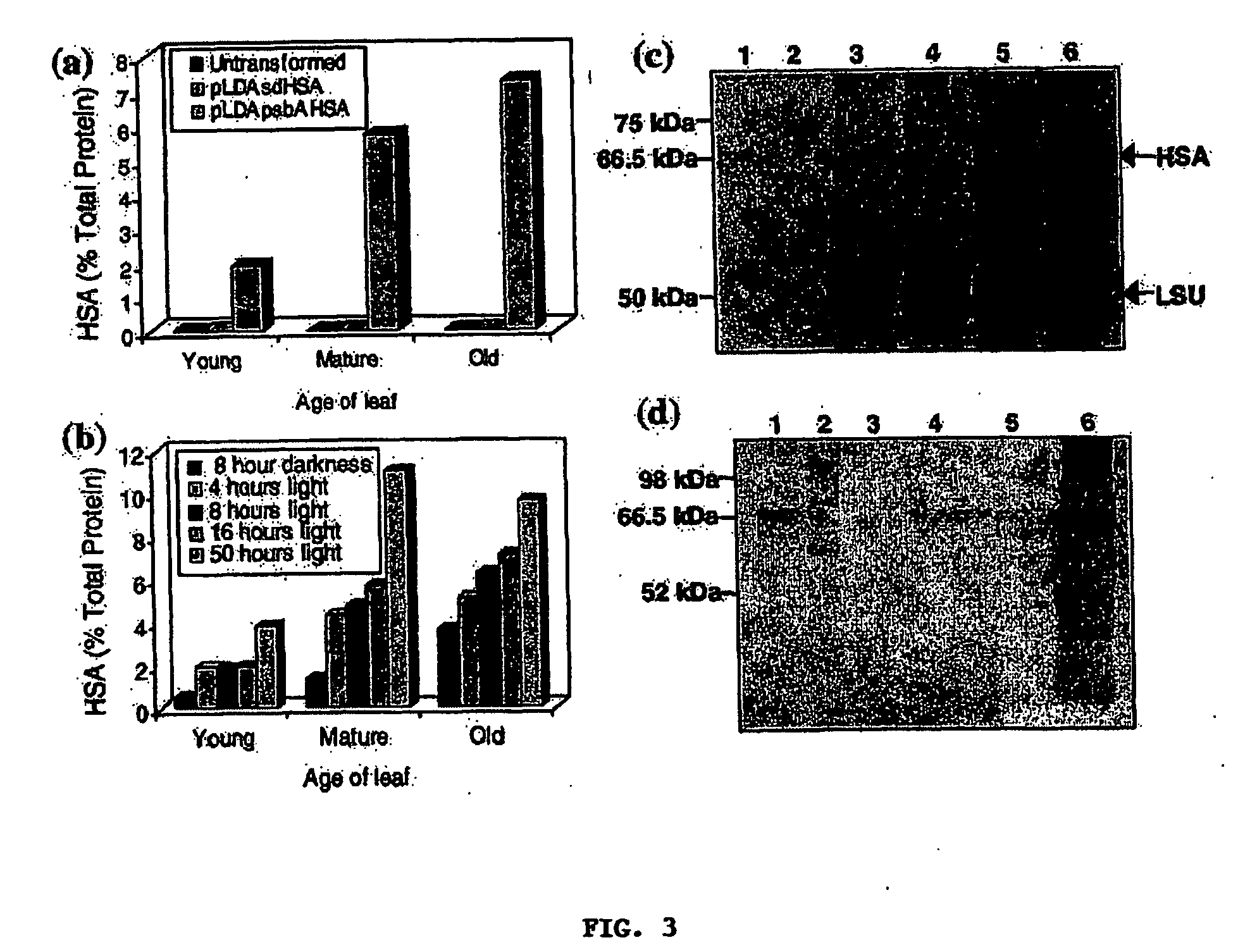Chloroplast transgenic approach to express and purify human serum albumin, a protein highly susceptible to proteolytic degradation
a transgenic approach and protein technology, applied in the field of plant plastid genome gene engineering, can solve the problems of high susceptibility to proteolytic degradation and high cost of purification, and achieve the effects of high susceptibility, high purification cost, and easy hyper-expression of transgenes
- Summary
- Abstract
- Description
- Claims
- Application Information
AI Technical Summary
Benefits of technology
Problems solved by technology
Method used
Image
Examples
Embodiment Construction
[0036] In one preferred aspect, vectors are provided, which can be stably integrated into the plastid genome of plants for the variable-expression of Human Serum Albumin (HSA). In other preferred aspects methods of transforming plastid genomes to variable-express HSA, transformed plants and progeny thereof, which variable-express HSA are provided. Still another aspect provides for methods of variable-expressing biopharmaceutical proteins using selected regulatory elements. Another aspect provides for methods and constructs which protect biopharmaceutical proteins from proteolytic degradation.
[0037] The preferred aspects of this application are applicable to all plastids of higher plants. These plastids include the chromoplasts, which are present in the fruits, vegetables, and flowers; amyloplasts which are present in tubers such as potato; proplastids in the roots of higher plants; leucoplasts and etioplasts, both of which are present in the non-green parts of plants.
[0038] One as...
PUM
| Property | Measurement | Unit |
|---|---|---|
| weight | aaaaa | aaaaa |
| molecular weight | aaaaa | aaaaa |
| diameter | aaaaa | aaaaa |
Abstract
Description
Claims
Application Information
 Login to View More
Login to View More - R&D
- Intellectual Property
- Life Sciences
- Materials
- Tech Scout
- Unparalleled Data Quality
- Higher Quality Content
- 60% Fewer Hallucinations
Browse by: Latest US Patents, China's latest patents, Technical Efficacy Thesaurus, Application Domain, Technology Topic, Popular Technical Reports.
© 2025 PatSnap. All rights reserved.Legal|Privacy policy|Modern Slavery Act Transparency Statement|Sitemap|About US| Contact US: help@patsnap.com



